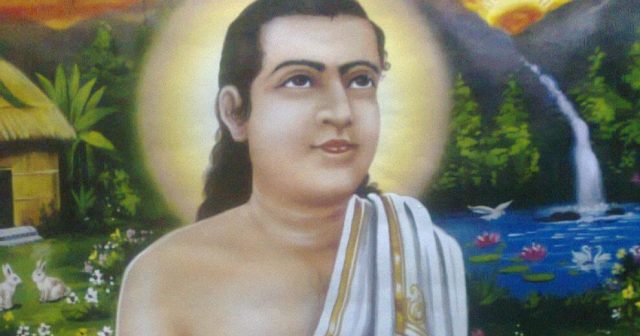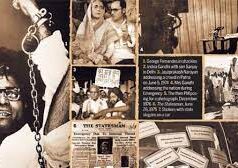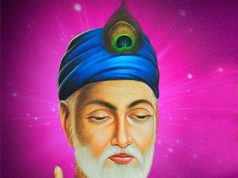
–Anant Seth
The Eighth day of October this year happens to be the Janma-Tithi of Srimanta Sankardev, an Assamese polymath, who was born in 1449 CE at Alipukhuri near Bardowa, presently in Nagaon district of Assam. He was born to Satyasandhya Devi and Kusumbar Bhuyan. His father was the Siromani Bhuyan – the Chief Landlord. Sankardev lost his parents at a very tender age and was brought up by his grandmother, Khersuti.
Sankardev is regarded as a polymath because he was a saint, scholar, poet, playwright, socio-religious reformer and a figure of importance in the religio-cultural history of Assam. He is regarded as the pioneer of Ekasarana – the socio-religious movement of Medieval Assam – and is widely credited with building on past cultural relics and devising new forms of music (Borgeet), theatrical performance (Ankia Naat, Bhaona), dance (Sattriya) and literary language (Brajavali). Besides, he has left an extensive collection of literary works which consists of transliterations of scriptures (Bhagavat of Sankardev), poetry and theological works written in Sanskrit, Assamese and Brajavali. More details on the various facets of Sankardev’s life and his times can be obtained from “Shankar Charit” (also known as “Guru Charit”). The book was written in the second decade of 18th century.
Though he was a multi-talented and accomplished genius excelling in various domains, the central role of Sankardev in the socio-cultural lives of the Assamese people was that of a religious saint. During his times, the socio-religious condition of Assam was deplorable. To salvage the situation, Sankardev founded the Neo-Vaishnavite religious sect in Assam which is commonly known as the ‘Ekasarana Naam Dharma’. Ekasarana follows the dasya attitude (bhava) of worship in which the devotee considers himself to be a servant of God. In contrast to other Vaishnava schools, Radha is not worshiped along with Krishna. The people who practice this religious sect are referred to variously as Mahapurushia, Sarania and Sankari.He also undertook steps to remove social evils and religious anomalies prevailing in the society. The source of inspiration behind his talents – explored everywhere in literature, music and arts – was his unique thoughts and actions aimed towards the expansion of Vishnu-Bhakti Marg and its ideals.
A significant characteristic of his artistic consciousness is the means he used to communicate. He engaged himself through all his activities in uniting people ofall communities under one roof through his philosophical justifications. The major objective behind his creations was the overall development of the lives and occupation of his people. Sankardev made his efforts to offer a structured and noble life to his people enlightened by spiritual consciousness. Even after five centuries, Assamese society continues to be influenced by the Neo-Vaishnavite movements pioneered by Sankardev. The impact of the movement is well spread across the creations and developments of Assamese society and culture. His philosophy of life never included superstition, caste-discrimination and other social prejudices. He established Naamghars (Prayer Houses of the Ekasarana religious sect) and Sattras (Institutional Centres of Ekasarana sect) guided by the motto “Sarba Dharma Sanatana”(All Religion is Sanatan Religion). Ekasarana viewed people equally irrespective of caste and class. He abolished the discriminations existing at the level of class and caste and gathered all the people on the same floor. Sankardev would probably be one of the foremost rebels to abolish untouchability in the country. Couple of centuries even before Mohandas Gandhi, Sankardev denounced untouchability and opted for religious philosophy to erase discrimination due to caste. Reformation with radical thought was sought by Sankardev for abolishing injustice and inequality. He deserves to be regarded as the forerunner of non-violence and peaceful co-existence.
Another salient characteristic of Sankardev’s philosophy was that he was not at all orthodox in any case. His attempts to enrich his own tradition and society by means of importing ideals from other traditions outside the state to strengthen the own are widely known. The assimilation of items of different cultures adds to Sankardev’s achievements. In the centers of Hindu religion in India, temples were built in permanent forms by bricks whereas in Assam, religious places were well architectured even in the early centuries. But Sankardev built the Naamghars with the help of essentials like bamboo, wood and thatching grass which was an easier practice for common people.
Sankardev, the polymath that he was, had an economic foresight much ahead of his times. He was aware of the fact that Agriculture cannot be the only means of survival. Keeping in mind this aspect, Sankardevtook an initiative to open up different possibilities of means of survival in the state. TheVaishnavite culture of Sankardev’s times was rich in the production of material objects. These included different wooden idols, masks, cool-beds made of the teeth of elephant, flowery fans, Brindawani clothes, image of Chihnajatra-Sapta Baikuntha, the art of the buildingthrones, the style of preparing leaves of Saachi for the creation of books etc. The instances of architecture of those time could well be identified through the image of Naamghars, Kirtan Ghars, Devagrihas, Sattras etc. All these monumental settings provided means of livelihood to the people. People started showing their interests in the earning of livelihood by engaging themselves in fields such as Barhoi (carpenter), Kumhar (pot maker), Painter etc. Besides, different posts like Naamghoriya, Sattradhikari etc. were created to take care of the institutions such as Naamghar and Sattra. Although these paths are not considered as paths of employment but through these ways, people could easily find out means of self-employment to a great extent.
It would be apt to say that Sankardev was the first revolutionary of North-East India. The main motto of revolution is to change the social values and develop the entire society by creating an environment for those historical changes. Sankardev brought newness and reformation in every strata of the society and this resulted in innumerable developments in the societal realm. The creations of Sankardev are the most precious gems of Assamese literature. His creations such as Borgeet, Classical music etc. have been able to gel into the Indian national platform with a unique fragrance. By following the model of Sankari songs, different new songs were created in later years which became popular amongst the masses everywhere. Sattriya dance, for example, is such an interesting dance type which is equally popular and original as Kathak and Bharat Natyam in India. Bhaona is another instance of the beauty and gravity of Assamese Performing Arts. In a sense Sankardev started a new era in the religious and social movement of Assam and has contributed tremendously to the growth and development of Assam and its people.
(Writer is a Legal Practitioner from Hyderabad)














